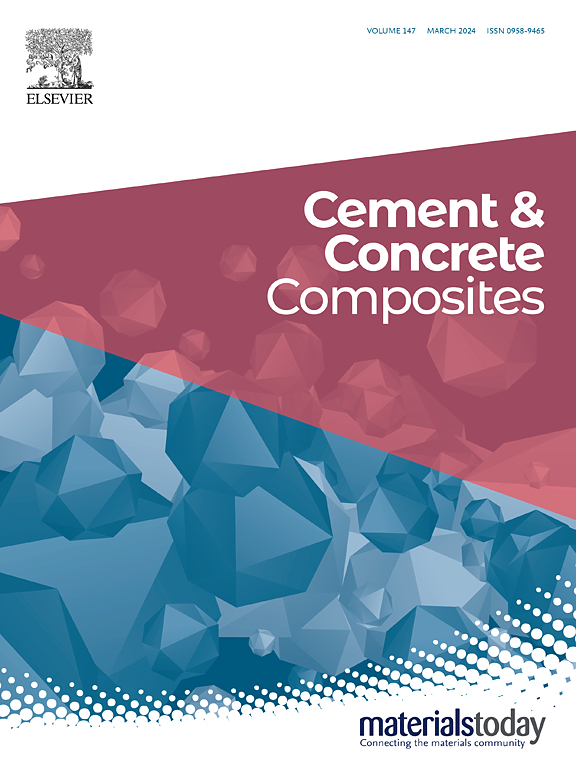Calcined clays for climate neutral (“net zero”) cements: shear-dependent rheological behavior and application performance
IF 13.1
1区 工程技术
Q1 CONSTRUCTION & BUILDING TECHNOLOGY
引用次数: 0
Abstract
The performance of low-carbon cements prepared from different neat calcined clays (CCs) can be very inconsistent due to substantial variations in the composition of the CC samples. To gain a better understanding and further promote the practical application of such low-carbon cements incorporating CCs, the influence of calcined clays possessing different mineralogical compositions on the rheological behavior of the blended cements was investigated. First, the shear-dependent rheology of pastes preparing from four types of CCs (1:1 and 1:2 type) blended with OPC at 70:30 and 30:70 wt./wt. ratios was elucidated. As it is well established that mortar tests are more representative for the behavior of actual concrete than cement paste, the rheological properties of OPC/CC mortars were evaluated via spread flow, flow line and V-funnel empty time tests. An industrial precast type HPEG (methallyl ether) PCE and a non-ionic co-dispersant were employed as dispersants. It was found that incorporation of CC greatly influences packing density and water film thickness of the composite cements. Moreover, performance of the blended cements significantly depends on the physio-chemical properties of the individual CCs, e.g. their particle size distribution, morphology and surface chemistry. To elucidate the underlying mechanism, PCE adsorption and surface charge (zeta potential) of the CC composite cements were determined, and a correlation between effectiveness of the PCE and its adsorbed amount per BET specific surface area of the binder was revealed.
用于气候中性(“净零”)水泥的煅烧粘土:剪切依赖流变行为和应用性能
由不同纯煅烧粘土(CCs)制备的低碳水泥的性能可能非常不一致,因为CC样品的组成存在很大差异。为了更好地理解并进一步促进含CCs的低碳水泥的实际应用,研究了不同矿物学组成的煅烧粘土对混合水泥流变行为的影响。首先,由四种类型的CCs(1:1和1:2型)与OPC以70:30和30:70 wt./wt混合制备的膏体的剪切依赖流变性。比率被阐明。由于砂浆试验比水泥浆体更能代表实际混凝土的性能,因此通过铺流、流线和v漏斗空时间试验对OPC/CC砂浆的流变特性进行了评价。采用工业预制型HPEG(甲基醚)PCE和非离子共分散剂作为分散剂。研究发现,CC的掺入对复合水泥的充填密度和水膜厚度有较大影响。此外,混合水泥的性能在很大程度上取决于单个CCs的物理化学性质,例如它们的粒径分布、形态和表面化学。为了阐明其潜在的机理,我们测定了CC复合胶结剂对PCE的吸附和表面电荷(zeta电位),并揭示了PCE的有效性与其每BET比表面积的吸附量之间的相关性。
本文章由计算机程序翻译,如有差异,请以英文原文为准。
求助全文
约1分钟内获得全文
求助全文
来源期刊

Cement & concrete composites
工程技术-材料科学:复合
CiteScore
18.70
自引率
11.40%
发文量
459
审稿时长
65 days
期刊介绍:
Cement & concrete composites focuses on advancements in cement-concrete composite technology and the production, use, and performance of cement-based construction materials. It covers a wide range of materials, including fiber-reinforced composites, polymer composites, ferrocement, and those incorporating special aggregates or waste materials. Major themes include microstructure, material properties, testing, durability, mechanics, modeling, design, fabrication, and practical applications. The journal welcomes papers on structural behavior, field studies, repair and maintenance, serviceability, and sustainability. It aims to enhance understanding, provide a platform for unconventional materials, promote low-cost energy-saving materials, and bridge the gap between materials science, engineering, and construction. Special issues on emerging topics are also published to encourage collaboration between materials scientists, engineers, designers, and fabricators.
 求助内容:
求助内容: 应助结果提醒方式:
应助结果提醒方式:


